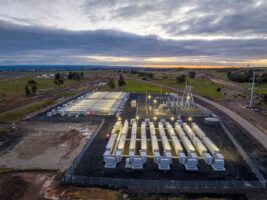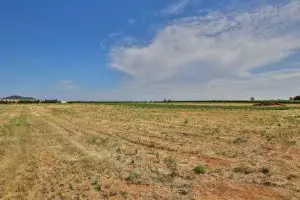Last week we brought you analysis of the overall financial performance from the first year of operations of the Tesla big battery in South Australia, and this week updated with more insight into how it is playing a critical role in maintaining grid security, and preventing blackouts, as highlighted by its response to the dramatic inter-connector failure in August.
Today, we are going to dig deeper into the presentations given this week by the Tesla big battery’s owner, Neoen, and independent consultant Aurecon.
If it seems like over-kill, it’s because it is important. The battery, and its functions, are either completely misunderstood, ignored or deliberately misrepresented from the government down, and particularly in mainstream media, and it’s crucial to get this information out there.
First, let’s recap on some of the important points. The Tesla big battery was built without subsidy, in a period of just 4.5 months from design to full operations, and at a cost of $91 million. If the figures available to date are any guide, it is making plenty of money ($24 million in revenue this year) and may deliver a payback to its owners of less than four years.
Even better, it is delivering an even bigger market benefit for consumers ($40-$50 million in its first year) by lowering costs, particularly in the frequency control market, but also in wholesale price. Add in the value of grid security, and the avoidance of blackouts, and the savings are considerable.
Tesla makes its money through a $4 million a year contract (for 10 years) with the South Australia government, and sets aside 90MW and 10MWh to provide grid security, mostly by intervening when major events happen.
Its role here is not to save the world on its own, but to hold the fort until the slower moving cavalry arrives. This can mean the difference between lights out for some, as the grid moves to protect itself by shedding load, and no interruptions at all.
The rest of the money comes from 30MW/119MWh allocated to wholesale electricity market, and most of this comes in the frequency control and ancillary services (FCAS) market, where it responds to sudden changes in frequency, such as when big coal units trip (and there has been more than 100 of those since the battery went into service just over 12 months ago).
 This graph above, presented by Neoen shows the battery – officially known as the Hornsdale Power Reserve – reacting instantaneously and in perfect synchronicity with the changes in frequency – in this case triggered by the failure of a unit at a Queensland coal generator, one of more than 100 such coal unit failures in the past 12 months.
This graph above, presented by Neoen shows the battery – officially known as the Hornsdale Power Reserve – reacting instantaneously and in perfect synchronicity with the changes in frequency – in this case triggered by the failure of a unit at a Queensland coal generator, one of more than 100 such coal unit failures in the past 12 months.
Neoen’s head of development Garth Heron describes this as “regulating the heart-beat of the grid.” It is keeping the links between state grids connected by pushing and pulling on the frequency to make sure it goes back into normal range.
The speed of the battery – its ability to respond in 0.1 seconds and switch from full charge to discharge (and vice versa) quicker than a blink of an eye – was anticipated. What has stunned everyone – the Australian Energy Market Operator and the battery owners included – has been its accuracy.
 This graph, from the independent Aurecon report prepared by Paul Gleeson, highlights this point. The top one shows what a conventional generator does in response to a signal from the grid. It kinds of oversteps and under-steps, like a drunk walking down a thin white line.
This graph, from the independent Aurecon report prepared by Paul Gleeson, highlights this point. The top one shows what a conventional generator does in response to a signal from the grid. It kinds of oversteps and under-steps, like a drunk walking down a thin white line.
The next graph shows how the battery follows the signal exactly. And remember, this is helping the country’s biggest man-made machine operate at the speed of light. It really is quite remarkable. The battery responds in seconds, the conventional generators sometimes take minutes to get their aim right.
And this is not just some academic observation that could be lost in the annals of engineering history, it has tangible benefits.
The first of these benefits is that reduction in the the risk of blackouts, or load shedding, from network problems like the lightning strikes that occurred on August 25, or the numerous technical failures that have plagued the Victoria-South Australia link.
The battery proved this on that August 25 event, ironically the first full day in power for a new prime minister who blithely and idiotically had dismissed the big battery as no more useful than a big banana.
This next graph shows the confidence that the battery can provide the market operator going forward. The modelling done by Aurecon looks at what might happen if the Heywood inter-connector – the main link from Victoria and South Australia – were to trip with 200MW of imports.
The black line shows what would likely happen with only conventional generators in action. The rules require their governor controls to respond within six seconds, but that is too slow. Within five seconds, the frequency has already fallen below 49hZ and load shedding starts.
With the fast-moving battery – which doesn’t have to scramble around looking for its long johns and spectacles – the frequency fall is likely arrested much earlier and easily within the normal operating bands. No home or business finds its power cut off.
And not only do the lights stay on, but the costs of this service come down. This graph shows the average payments to the previous incumbent and gluttonous fossil fuel generators which, like elsewhere in the market, have been greedily gaming the FCAS market (in black) until the arrival of the batter at Hornsdale. The battery is not just quicker and more accurate, it’s cheaper too.
Neoen notes that on January 14, AEMO estimates the savings from the presence of the battery delivered savings of $3.5 million in one five hour period when the market operator called for 35MW of local FCAS supply. Total savings from the FCAS market for the first year are put at $40 million.
The presence of Hornsdale has now eliminated the need for the constraint to be imposed, because AEMO knows it can rely on the battery – and in doing so it has removed one of the biggest honey-pots of the gas cartel.
Another important role given to the Tesla big battery is in the System Integrity Protection Scheme, which was brought in to avoid a repeat of the System Black in South Australia in 2016.
This graph above illustrates the response times. Aurecon notes that the battery is a key participant in Stage 1 of the SIPS.
“Within approximately 250 milliseconds of a signal being sent by ElectraNet, HPR will discharge to 100 MW output.
“The actual incremental discharge will depend on its operating state at the time. Its minimum incremental discharge under a SIPS command will be the SA Government’s reserved 70 MW capacity, however the incremental response could be up to 140 MW if HPR is charging its full market capacity at the time.
“During a SIPS event, HPR will provide a near instantaneous 70 – 140 MW support for the interconnector. This will potentially prevent Stage 2 of the SIPS scheme being required and therefore, 200 MW of load shedding in SA (depending on the interconnector ow at the time and magnitude of the contingency event).”
It is important to note here that while this battery has some specific roles, other batteries may do something completely different. And for some of these roles – like balancing the output of adjacent wind and solar plants, providing islanding facilities (keeping lights on locally if rest of grid is done), and many other grid services – there is not much revenue.
Aurecon, like many others, notes that the design of the market and its rules and operating procedures need to catch ip with technology, and quickly. There is more, of course, that can be done.
It notes that a storage facility of more than 5MW is currently required to register as both a scheduled load and market customer.
A new registration category could enable a standalone ESS or hybrid ESS + generator to have a single registration, single performance standard applicable to the ‘hybrid system’, provide a single set of market bids and receive a single dispatch instruction for each service.
AEMO is exploring how a new Bi-directional Resource Provider category can facilitate the integration of batteries. To ensure operational and commercial viability, design details will need to consider classification, dispatch price bands, and any additional compliance requirements.
To properly reward its speed and accuracy, a market in Fast Frequency Response (FFR) markets that have been established in some overseas markets and are typically only fulfilled by batteries, also needs to be created, particularly as more wind and solar enter the grid.
There’s a lot to do to get this right, particularly as a second and third and fourth wave of battery storage, and pumped hydro storage, enters the market. Perhaps as important is the need for the idiots and ideologues that current influence energy policy debate in this country to pull their heads in, and learn some facts. One would be a start.
Also, please look out for the next episode of the Energy Insiders podcast, when we will have interviews with Neoen CEO Xavier Barbara, head of development Garth Heron, and Aurecon’s Paul Gleeson.













